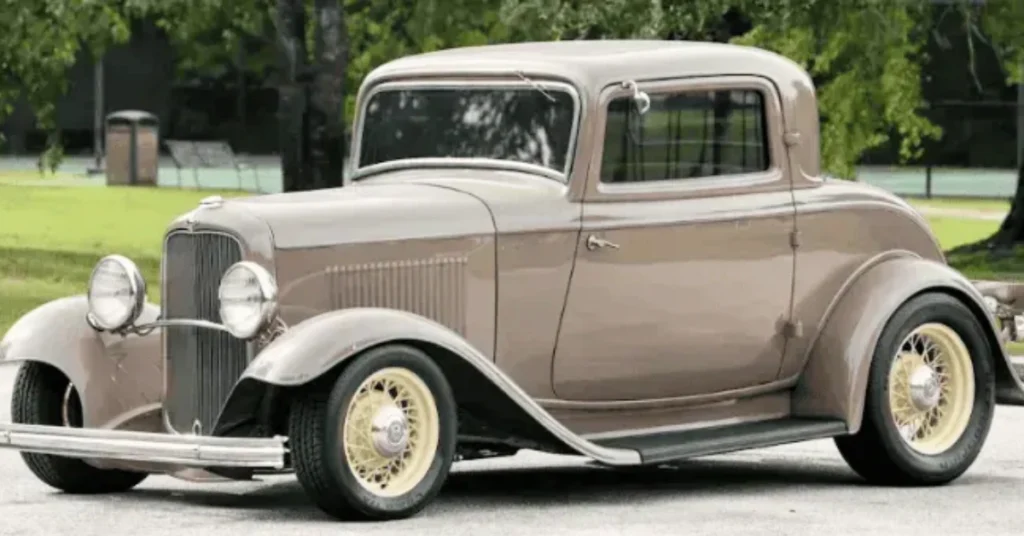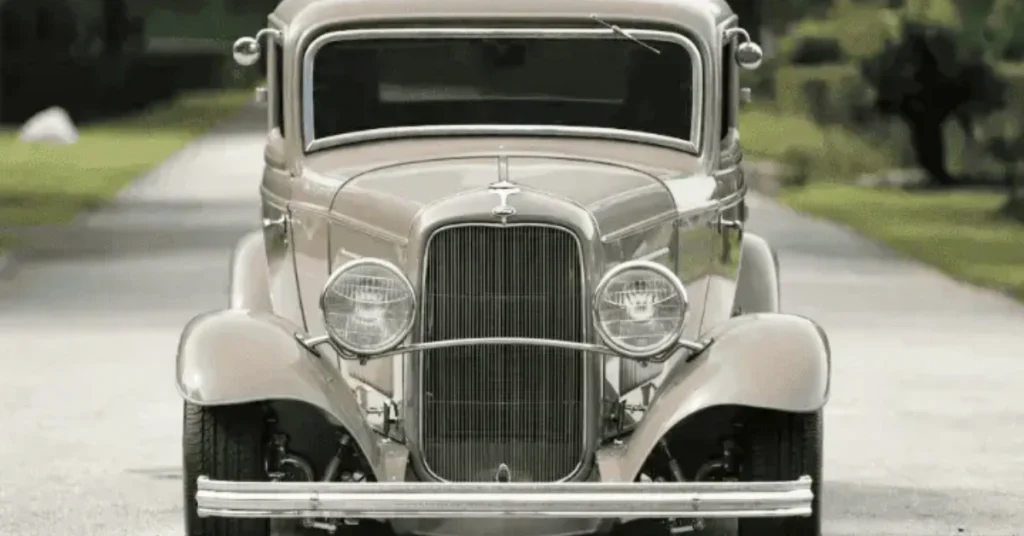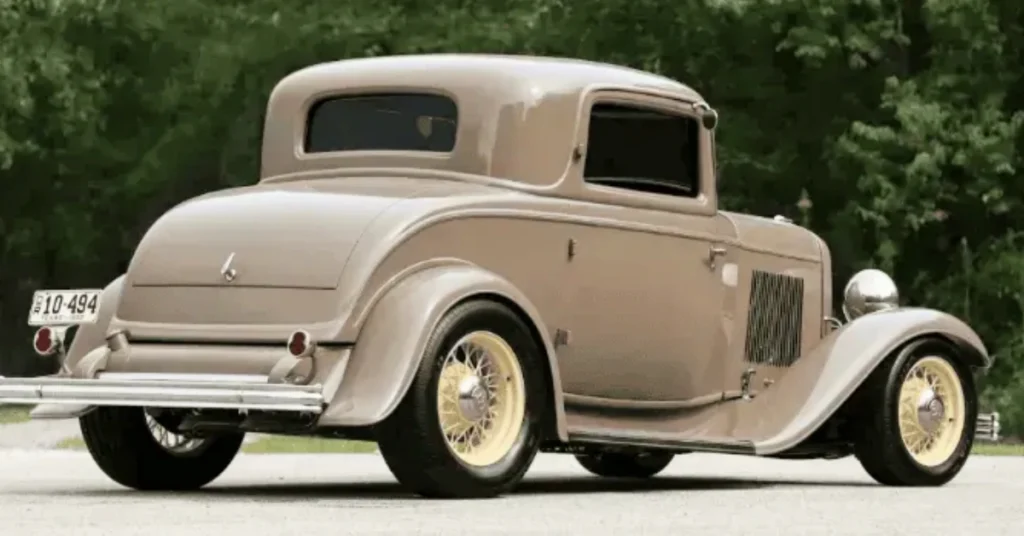The 1932 Ford Roadster holds a special place in automotive history as one of the most iconic cars of the early 20th century, revered for its elegant design and hot rod potential. For boxing legend George Foreman, this classic car was more than just a vehicle—it was the catalyst for a lifelong love affair with automobiles. This article explores the history of the 1932 Ford Roadster, its significance in Foreman’s life, its design and performance, and its enduring legacy as a symbol of American automotive culture.
Table of Contents
The 1932 Ford Roadster: An Automotive Icon
A Milestone in Ford’s Legacy
Introduced in 1932, the Ford Model 18, commonly known as the ’32 Ford, marked a pivotal moment for the Ford Motor Company. It was the first Ford to feature a V8 engine, a groundbreaking innovation that made high performance accessible to the masses. The Roadster, with its open-top design and sleek lines, became the darling of car enthusiasts, setting the stage for the hot rod movement that would define American car culture in the decades to come.
The ’32 Ford arrived during the Great Depression, a challenging time for automakers. Despite economic hardships, its affordability and versatility made it a hit, appealing to everyone from everyday drivers to racers and customizers. Its timeless design and mechanical simplicity ensured its lasting popularity, making it a favorite among collectors and restorers today.
George Foreman’s Connection
George Foreman, the two-time heavyweight boxing champion and beloved entrepreneur, is known for his larger-than-life personality and diverse interests. Among his passions is a deep appreciation for classic cars, which began with his ownership of a 1932 Ford Roadster. For Foreman, the Roadster was not just a car but a symbol of freedom and achievement, reflecting his journey from humble beginnings to global fame.

George Foreman and the 1932 Ford Roadster
The Spark of a Passion
Foreman’s love for cars took root in his youth, but it was the 1932 Ford Roadster that truly ignited his passion. Acquired early in his career, the Roadster represented a milestone for the young boxer, who grew up in poverty in Houston, Texas. Owning such an elegant and historically significant car was a testament to his hard-earned success, and it became a cherished part of his personal story.
Foreman has often spoken fondly of the Roadster, describing it as a source of pride and inspiration. The car’s classic design and mechanical simplicity resonated with his straightforward, no-nonsense approach to life, while its performance potential mirrored his own explosive power in the ring.
A Symbol of Achievement
For Foreman, the 1932 Ford Roadster was more than a possession—it was a symbol of his rise from adversity. As he transitioned from boxing to entrepreneurship, notably with the George Foreman Grill, his love for classic cars grew, leading him to amass a collection of vintage vehicles. The Roadster, however, remained a cornerstone, representing the moment when his dreams began to take shape.
The 1968 Ford Mustang Mach 1: Hollywood’s Wildest Icon of the 1970s and a Priceless Classic Today
Liam Neeson’s 1970 Dodge Challenger: The Iconic Muscle Car That Shined in ‘The Grey’
The 1970 Pontiac GTO Judge Ram Air IV: The Rarest and Most Exclusive Muscle Car of the 1970s
1990s Geo Metro: The Forgotten Champion of Fuel Efficiency in American Automotive History
Design and Features of the 1932 Ford Roadster
Elegant and Timeless Styling
The 1932 Ford Roadster was a masterpiece of early automotive design, blending sophistication with rugged charm. Its low-slung body, flowing fenders, and exposed wheels gave it a graceful yet muscular appearance. The open-top configuration, with a foldable soft top, offered an exhilarating driving experience, while chrome accents and a distinctive grille added a touch of elegance.
The interior was minimalist, featuring a basic dashboard with essential gauges, a large steering wheel, and bench seating. While not luxurious by modern standards, the Roadster’s cabin was functional and inviting, designed to put the driver in direct connection with the car’s mechanical soul. Custom paint colors Kepanels, vibrant colors like Dearborn Gray and Washington Blue, were popular, often personalized by owners to reflect their style.
The Revolutionary Flathead V8
The 1932 Ford Roadster’s defining feature was its 221-cubic-inch flathead V8 engine, a game-changer in the automotive world. Producing 65 horsepower in its stock form, the engine was modest by today’s standards but revolutionary for its time, offering unprecedented power for a car of its price. Its simple design made it easy to modify, leading to its widespread use in hot rods and custom builds.
The Roadster came with a three-speed manual transmission and a lightweight chassis, weighing just over 2,000 pounds. This combination allowed it to reach speeds of up to 70 mph, impressive for a car of its era. Later modifications by hot rodders, including Foreman’s own Roadster, often boosted output significantly, with upgraded carburetors, exhausts, and other performance parts.

Performance and Driving Experience
A Driver’s Delight
Driving the 1932 Ford Roadster was an immersive experience, blending raw mechanical feedback with open-air freedom. The flathead V8 delivered smooth power, accompanied by a distinctive exhaust note that became a hallmark of the era. The car’s lightweight construction and responsive steering made it nimble, though its drum brakes and leaf-spring suspension required skill to handle at high speeds.
For Foreman, driving the Roadster was a source of joy, offering a sense of connection to the road and the car’s history. Its simplicity meant maintenance was straightforward, though the lack of modern amenities like power steering or air conditioning added to its old-school charm.
Hot Rod Potential
The 1932 Ford Roadster’s versatility made it a favorite among hot rodders, including Foreman, who likely customized his car to enhance its performance. Common upgrades included high-performance heads, multi-carburetor setups, and modern transmissions, transforming the Roadster into a fire-breathing machine. These modifications preserved the car’s classic look while delivering modern power, making it a staple at car shows and drag strips.
Cultural Impact and Legacy
The Birth of Hot Rod Culture
The 1932 Ford Roadster played a pivotal role in the rise of hot rod culture, which flourished in the post-World War II era. Its affordable price, simple mechanics, and V8 engine made it the perfect canvas for customization, giving rise to a subculture of builders and racers. The Roadster’s influence is still felt today, with countless examples restored or modified for car shows, cruises, and racing events.
Foreman’s ownership of a ’32 Ford added a layer of celebrity cachet, linking the car to his larger-than-life persona. His passion for the Roadster helped shine a spotlight on its historical significance, inspiring other collectors and enthusiasts to preserve this piece of automotive history.
Collectibility and Value
Today, the 1932 Ford Roadster is a prized collector’s item, with values reflecting its rarity and cultural significance. Restored stock examples typically range from $40,000 to $80,000, while concours-quality or celebrity-owned cars, like Foreman’s, can fetch $100,000 or more at auction. Hot rod builds with modern components often command similar prices, depending on the quality of the work. The Roadster’s scarcity, combined with its iconic status, ensures its value continues to rise.

The Roadster’s Enduring Appeal
A Symbol of American Ingenuity
The 1932 Ford Roadster embodies the spirit of American innovation, blending affordability, performance, and style in a way that resonated with generations. For George Foreman, it was a personal milestone, marking his journey from hardship to triumph. Its elegant design and hot rod legacy continue to captivate enthusiasts, making it a timeless classic.
Lessons for Today
The Roadster’s story offers lessons for modern automakers, highlighting the value of simplicity, durability, and emotional connection in car design. As electric and autonomous vehicles dominate the future, the ’32 Ford reminds us of the joy of driving and the power of a well-crafted machine to inspire passion.
Conclusion
The 1932 Ford Roadster is more than a car—it’s a cultural touchstone that sparked George Foreman’s love for automobiles and left an indelible mark on American history. Its elegant design, revolutionary V8, and hot rod legacy make it a standout from the 1930s, while its connection to a boxing legend adds a layer of personal significance. Whether admired at a car show or cherished in a collector’s garage, the ’32 Ford Roadster remains a testament to the enduring power of classic cars to inspire, captivate, and endure.

